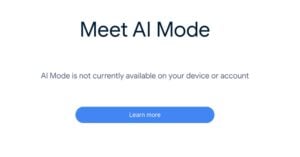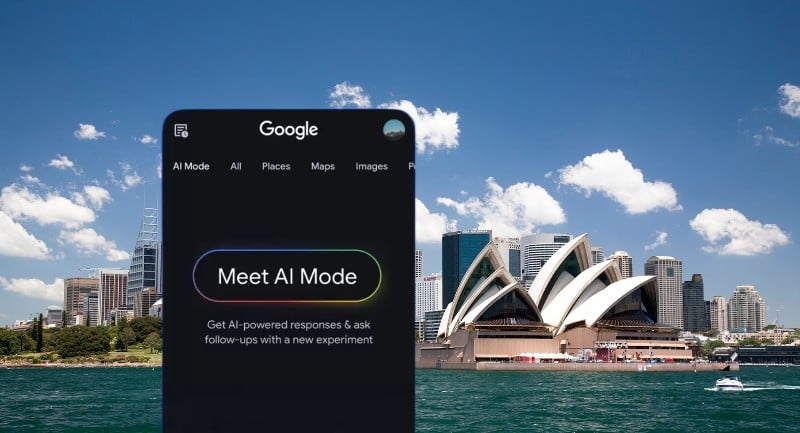In an effort to compete with new consumer-friendly AI platforms like ChatGPT, Google has been beefing up its own AI functionality within search and this week has delivered AI Mode in Australia.
AI Mode empowers Google users to ask longer and more complex questions. The search giant has said that this functionality is useful for “exploratory tasks like planning a trip, or understanding complex how-tos.” In a Google blog on the local launch, Google offered up the example search: ”I want to understand the different coffee brewing methods. Make a table comparing the differences in taste, ease of use, and the equipment needed.” And to follow it up with: “What’s the best grind size for each method?”
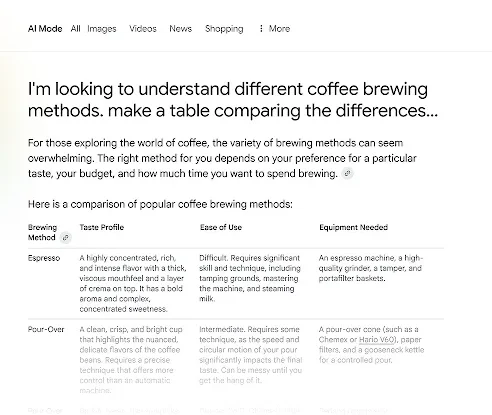
The pitch Google is making to users is that queries can now be done with fewer searches and with direct results that yield more detailed answers.
In the back-end, AI Mode uses a ‘query fan-out technique’, which means it takes your search query and breaks your question into subtopics before issuing a multitude of queries on your behalf.
The story Google are crafting for publishers is quite different to what marketers are being advised.
The Think With Google promotional page trumpeting the launch of AI Mode locally informs publishers that “when people click from search result pages with AI Overviews, these clicks are higher quality for websites, meaning that users are more likely to spend more time on the sites they visit.”
The key term is “when people click.”
Users of AI Mode will find that Google now offers them fewer clickable results with no blue hyperlinks displayed on the page. Functioning far more like ChatGPT’s answers to a search query, the result is Google has moved from serving as a platform that points you in the direction of quality answers to cutting out the middle man and just serving up the answers on the page.
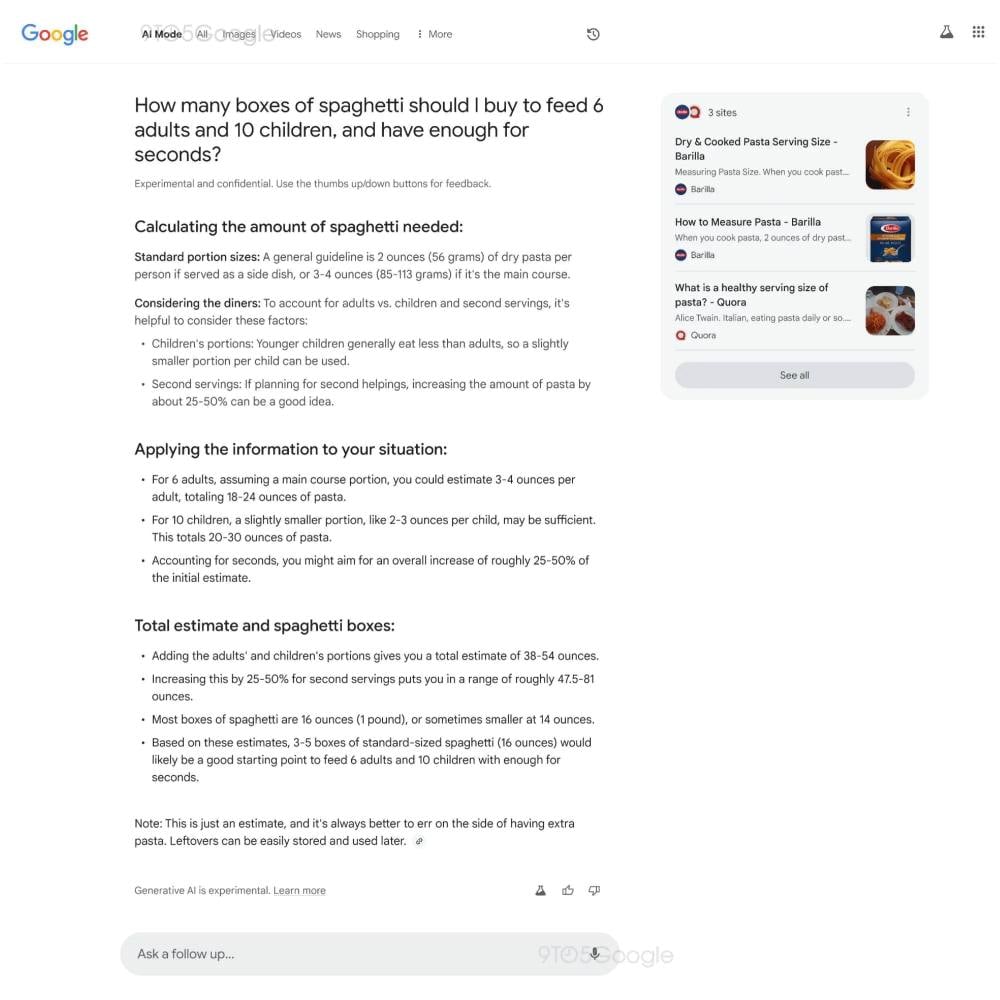
Screenshot courtesy of 9To5 Google
Google cites a survey result from research it conducted with the independent Ipsos which found that “60% of potential lead gen customers who saw an AI Overview in their search results claim it makes the decision-making process faster, easier, and/or less overwhelming.” This shows that, for the moment, users find benefit with the more streamlined delivery of news and information AI Mode can provide. But reduced search traffic to websites is not great for the overall health of the web.
In July, the US think tank Pew Research Centre found that when users were given a quality AI Overview after searching on Google, clicks to the primary source of the information were substantially lower:
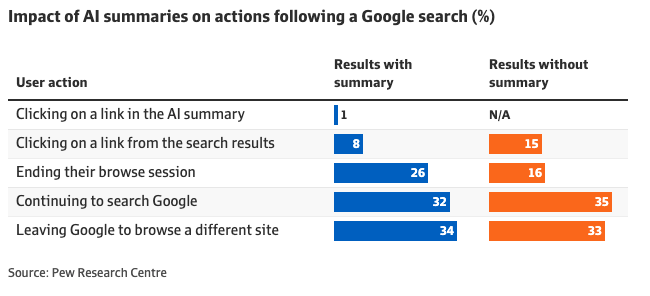
Google dispute the claims, with a spokesperson countering: “We consistently direct billions of clicks to websites daily and have not observed significant drops in aggregate web traffic as is being suggested.”
Contradicting these claims is research from SimilarWeb, which shared with Australia’s ABC data that showed global declines in news website traffic
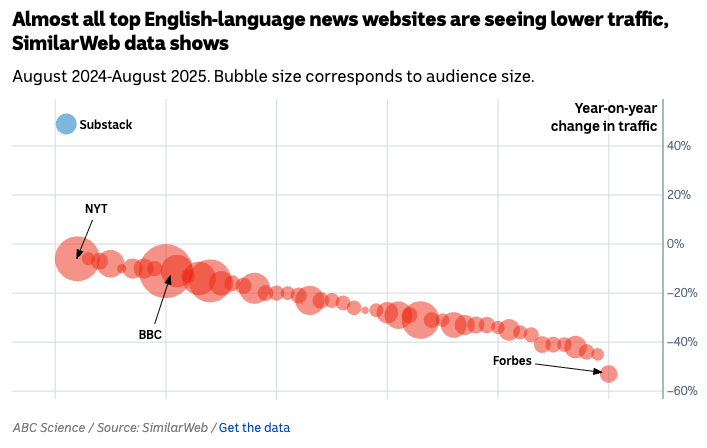
And similar declines reported by Australian news publishers:
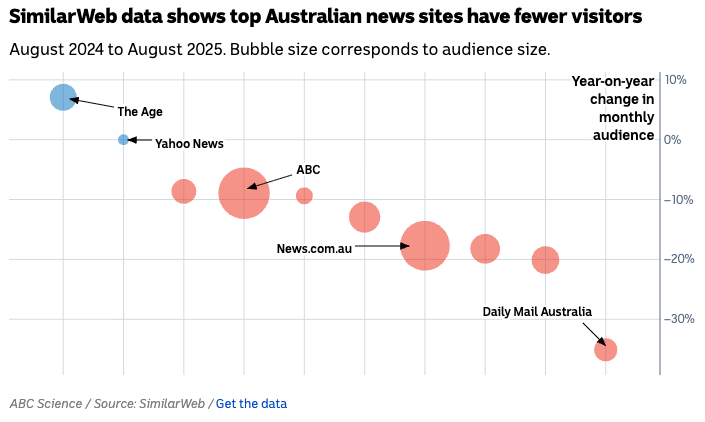
Perhaps a more rosey view for marketers
While AI Overviews and the more limiting AI Mode may be problematic for publishers, there remains opportunities for those wishing to market products directly through Google.
The product is yet to launch in Australia, but in the US Google now offers Ads in AI Overviews. They are currently being tested in AI Mode.
Google is actively advising marketers that they will be opening more opportunities for marketers to be displayed on pages with query results “where people are open to discovery and ready to decide.”
In the US where Ads in AI Overviews is available, marketers can access those channels through Google’s Performance Max, which enables performance advertisers to access all of their Google Ads inventory from a single campaign.
Uh, Google…
Efforts by Mediaweek to use the service resulted in a message advising that AI Mode was “not currently available on your device or account.” This is a 2023 Macbook with Chrome installed.
